World War II – History of Food Rationing
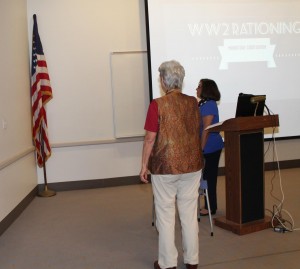
Beryl Williams, one of the members of the Historical Society of Monterey Park, led our flag salute on November 6th to honor the veterans and remember Pearl Harbor at a joint event held at the Monterey Park Bruggemeyer Library.
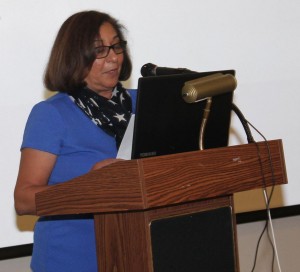
Librarian Cindy Costales welcomed everyone to this special event and exhibit at the library. She provided a brief history on November 11 called Armistice Day, to mark the end of World War I and honor the veterans. In 1926, Congress passed a resolution for an annual observance. In 1938, November 11 became a national holiday. 1954, November 11th became Veterans Day to honor American veterans of all wars
She quoted Ronald Regan: where do we find these men…from our free country. She thanked all of the veterans for their service to our country.
She spoke about the history of World War II that can be read in books or viewed in films that can be found at the library.
She introduced World War II veteran and author Charles “Norm” Stevens who successfully flew 34 missions over Europe. He has authored several books on his experiences. His books are available at the library.
This year is the 75th Anniversary of Pearl Harbor. She thanked Pedro Chan for his exhibit of displayed on the first floor of the library.
Laura Scudder had a victory garden and wrote about it in her newspaper columns.
She introduced Ernest Miller: a food historian, chef, educator and consultant who has traveled the world. He was first as an enlisted Marine and later as an officer in the Navy.
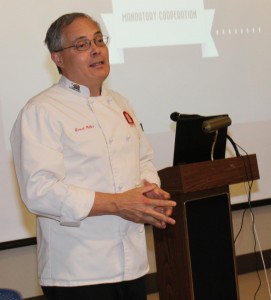
Ernest Miller spoke about the history of WWII food rationing in America. He said, “Food always has a story”. World War II rating began on the home front to first help feed our Allies in England and France. American did not want to enter into this war.
American first grew Victory Gardens during World War I. It later fed them during the Great Depression and the Dust Bowl.
He spoke about the history of military rations from General Neapolitan who made sure his men had enough food to fight successfully.
He was looking for a way to have good food successfully delivered so he offered a reward to the person who could make it happen. A Frenchman made it happen. He invented canned foods.
The French learned to ration food during World War I. The British learned to ration food during World War II.
In 1941, the United Stated began to ration under a volunteer program. In 1942, the program was mandatory. They first rationed rubber tires, then gas and then foods.
He showed a Power Point from that era that listed the various products being rationed and how the ration stamp system worked.
Rich or poor Americans could only purchase certain items with their stamps.
Fresh produce was not rationed but canned goods were because they were shipped overseas to the military.
Since tin was used in making cans people begin to can foods in glass jars.
He also stated the American liked the Black Market that was developed during Prohibition. They could, for a price, purchase just about anything the wanted during this time.
The government instituted price controls in 1944 to help prevent the Black Market.
Over 2 million Victory Gardens were established and 40% of the fresh vegetables and fruits were consumed from these gardens.
He said that Americans never wanted for food like Europeans during this period. They just had less food to enjoy.
After World War II the government created various food programs to help fee our poor. We also became an industrial nation.
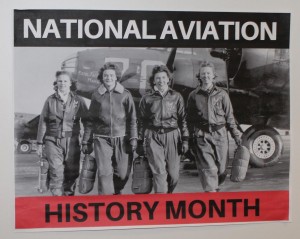
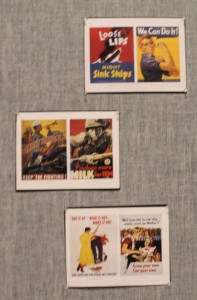
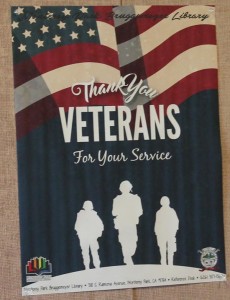
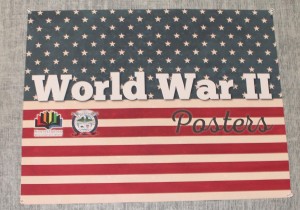
Some of the World War II posters viewed by Americans during the war so they would help support the cause.
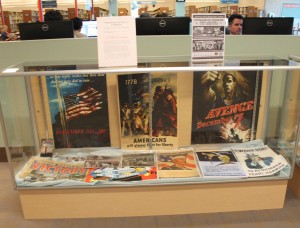
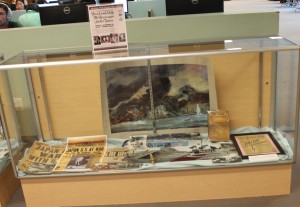
“Remembering Pearl Harbor 75th Anniversary” will feature WWII posters, photos, post cards and newspapers from the collection of exhibit organizer Pedro Chan, Ph.D. The public can view the exhibit November 3-30 in the display cases located on the first floor of the library.
Cindy Costales thanked the audience for attending this special event.
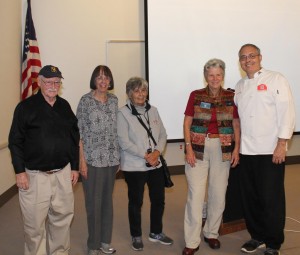
Members of the Historical Society joined with Ernest Miller for a picture at the end of the program.



